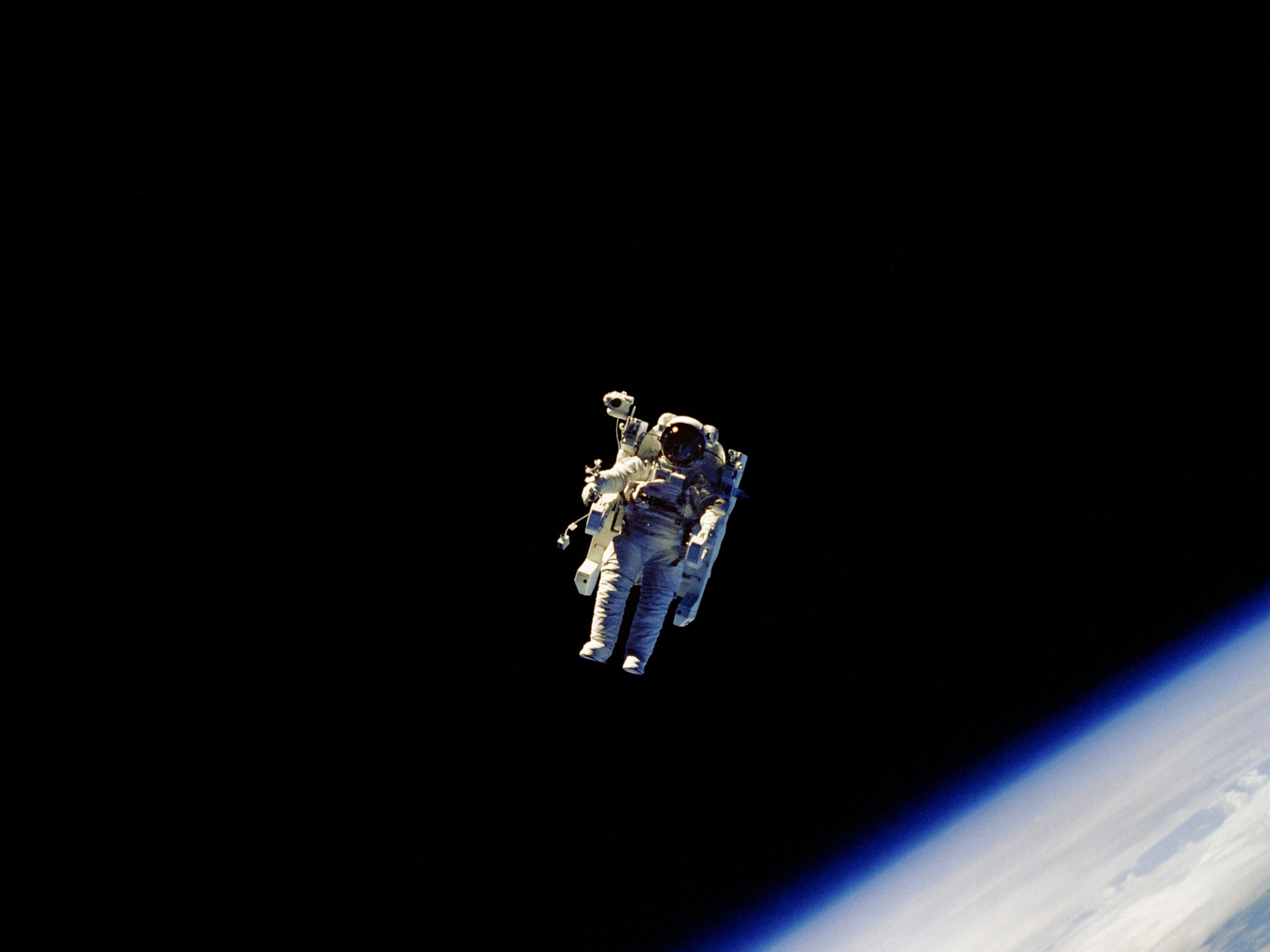
SpaceX's Dragon Docks With Space Station—A First
Private spacecraft now attached to orbiting lab.
Despite a hiccup with the craft's laser guidance system, SpaceX's Dragon space capsule was successfully plucked from orbit today and has officially docked with the International Space Station (ISS).
The milestone moment makes Dragon the first commercial craft to make contact with the orbiting laboratory—an event described as "just awesome" by SpaceX CEO Elon Musk on his Twitter feed.
At 9:56 a.m. ET, astronaut Don Pettit gently extended the station's robotic arm and captured the unmanned capsule, as the two spacecraft glided in formation about 250 miles (400 kilometers) above northwest Australia.
"Looks like we got us a dragon by the tail," Pettit told the cheering crowd at mission control in Houston shortly after the maneuver.
(Related: "Robot Arm to Grab Robotic Ship—A Space Station First.")
The ISS crew then used external cameras and high-powered binoculars to inspect Dragon and clear the craft for docking with the station's Harmony module.
After being pulled slowly into position, Dragon was securely bolted to the ISS as of 12:02 p.m. ET—making the craft a temporary "part" of the space station, according to NASA.
"The Dragon spacecraft [is] now … the first U.S. spacecraft to visit the ISS since space shuttle Atlantis last July," a NASA spokesperson said during a live broadcast of the historic docking.
Tomorrow morning the crew will open Dragon's hatch, and astronauts will enter the private capsule for the first time in space.
Dragon is scheduled to detach from the ISS and return to Earth next Thursday, landing in the Pacific Ocean off Southern California to be retreived by ship.
Launch Felt Like "Winning the Super Bowl"
Dragon launched for the space station at 3:44 a.m. ET on Tuesday, lifting off from Cape Canaveral Air Force Station in Florida aboard SpaceX's Falcon 9 rocket.
At a press conference held after the launch, SpaceX CEO Musk said that "every bit of adrenalin in my body released at that point," and that the elation he felt was like "winning the Super Bowl."
NASA administrator Charles Bolden also called Falcon 9's flight a picture-perfect launch.
"It's a great day for America. It's a great day for the world," Bolden told reporters on launch day.
"There were people who thought that [NASA] had gone away [with the retirement of the space shuttles]. But today says, No, we're not gone away at all. We've got the SpaceX-NASA team, and they came through this morning with flying colors."
(Related: Will SpaceX also send humans to Mars?)
In a Tuesday blog post, Bolden added that the U.S. space agency is "handing off to the private sector our transportation to the International Space Station so that NASA can focus on what we do best-exploring even deeper into our solar system, with missions to an asteroid and Mars on the horizon."
Dragon to Bring Back Experiments, Old Gloves
Stuffed with cargo for the ISS crew, the gumdrop-shaped Dragon capsule went through a gauntlet of test maneuvers before being allowed to dock with the ISS.
One of Dragon's most crucial tests was to determine whether its piloting software could follow instructions from astronauts aboard the ISS, in case they decided to abort the vehicle's approach to the space station.
"If Dragon is near the space station and something goes wrong, you want the astronauts to be able to say 'abort' and have the spacecraft leave without damaging anything," said SpaceX spokesperson Kirstin Brost Grantham.
Because this mission is primarily a test demonstration, Dragon didn't carry any essential items to the space station.
For example, the launch manifest includes clothing for astronauts, extra food, and laptop batteries. Similarly, the return payload will include hardware from completed space station experiments and old space suit gloves from past ISS inhabitants.
(Related: "Astronauts' Fingernails Falling Off Due to Glove Design.")
If the rest of the mission goes smoothly, NASA should give SpaceX permission to fulfill its $1.6-billion-dollar contract to ferry supplies—and eventually astronauts—to and from the ISS.
That's a big deal, according to Robert Pearlman, editor of the space-history and artifacts website collectSPACE.com. That's because, ever since NASA's space shuttles were retired last July, the agency has had no way of returning significant amounts of material back to Earth.
For now NASA can transport items to the space station using automated transfer vehicles operated by the European Space Agency (ESA) and the Japan Aerospace Exploration Agency (JAXA).
But these transporters are designed for one-way trips only and burn up on reentry, making return cargo trips impossible.
The Russian Soyuz spacecraft—currently NASA's only way of transporting astronauts to the ISS—does have the ability to return to Earth, but "its primary function is to return humans, not payload," Pearlman said.
Manned Private Flights by 2015?
SpaceX predicts that the first manned Dragon flights could occur as early as 2015. But before that happens, the spacecraft will need to be outfitted with more environmental controls and crew accommodations, something the company is already working on, according to SpaceX's Brost Grantham.
"A few months ago we had NASA astronauts come out and do a test of the accommodations to make sure it meets their needs," she said.
(Related pictures: "Homemade Personal Spacecraft Lifts Off.")
SpaceX will also have to demonstrate a successful launch-abort system for Dragon—using upgraded thrusters dubbed "SuperDracos"—before NASA will allow it to be used as a crew-transport vehicle.
"If there's an emergency, there will be these superthrusters on the side of the spacecraft that turn on and will immediately carry the astronauts a safe distance from the rocket," Brost Grantham said.
So far, NASA and SpaceX appear to have a good working relationship, collectSPACE.com's Pearlman added.
"I think NASA and SpaceX are working just as well as NASA and Boeing, NASA and Lockheed, and NASA and any of its other suppliers."








